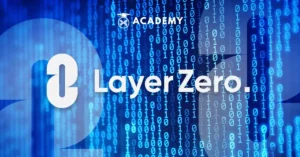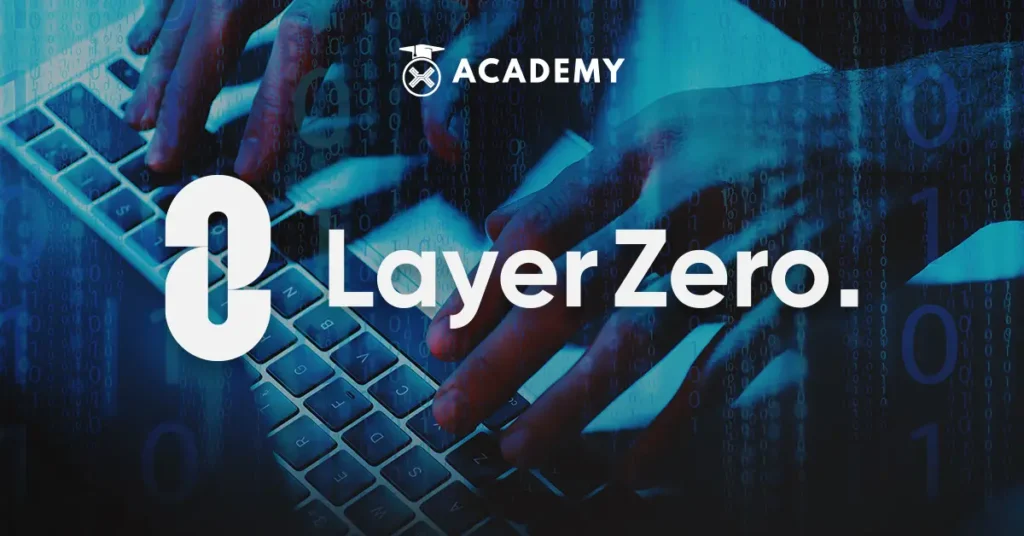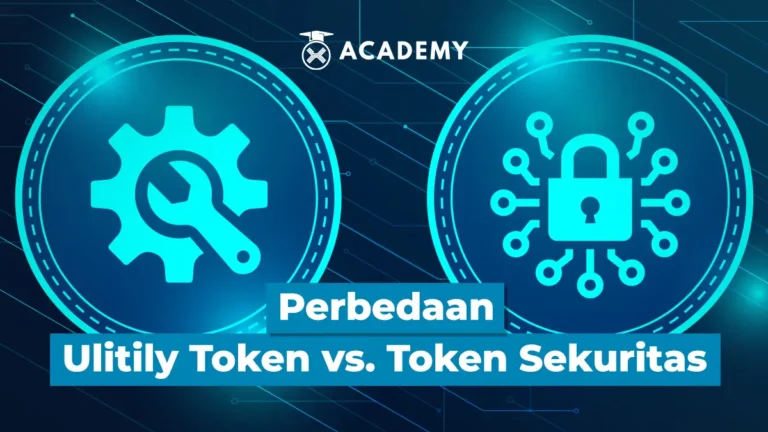One of the major challenges the blockchain industry faces today is the difficulty in transferring assets and data between different blockchain networks. However, this problem can now be solved with the advent of LayerZero Omnichain protocol as the solution.
LayerZero is an omnichain interoperability protocol created to facilitate lightweight cross-chain message exchange. LayerZero provides authentic and guaranteed message delivery with configurable levels of distrust.
It is a “blockchain of blockchains” that allows other blockchain networks to communicate directly and without trust. Check out this review to understand what LayerZero is, how it works, and popular examples!
What is LayerZero?
Quoting coinvestasi.com, LayerZero is an omnichain interoperability protocol that is open source. It facilitates cross-blockchain communication and seamless information exchange between multiple blockchains.
LayerZero uses innovative technology to provide connectivity between different blockchain networks. With LayerZero, all supported blockchains can communicate with each other easily.
It allows features such as asset exchanges, transfers, loans, lending, and more to be carried out across blockchains.
Founder and History of LayerZero

LayerZero Labs, the company behind the LayerZero protocol, was co-founded by Bryan Pellegrino, Ryan Zarick, and Caleb Banister in 2021. Layer Zero Labs began developing and establishing Layer Zero in September 2021.
In early 2022, the Layer Zero development team announced the success of their first fundraiser, along with the launch of the first Layer Zero protocol known as Stargate Finance.
In April 2023, Layer Zero successfully raised $120,000,000 in Series B funding, which raised the valuation of the Layer Zero protocol to $3,000,000,000. This was a remarkable feat, considering there were no LZ tokens in circulation then.
Since the past few months, rumors of a Layer Zero token airdrop have been a buzzing topic of conversation on Twitter (currently X).
What Are the Advantages of LayerZero Over Other Protocols?
Here are some of the advantages of LayerZero over other protocols, including:
- Layer Zero Original Asset Transfer: Layer Zero does not use wrapping systems or third parties to move assets. All assets transferred through LZ are genuine.
- Simple Layer Zero Implementation: Layer Zero has a lightweight protocol that is easily implemented by development teams. This is evident with more than 100 applications already adopting LZ.
- Cross-Chain System Security: Layer Zero is a relatively new technology in the crypto world. However, to date, the LZ cross-chain system has never been hacked, confirming the security of its cross-chain bridge system.
Benefits of LayerZero
Quoting layerzero.com, LayerZero offers some benefits to data centers, including:
- Reliability: Guarantees a stable power supply for 24/7 operations.
- Safety: Exceeds NFPA 70E recommendations, the gold standard for electrical safety.
- Scalability: Adapts to the needs of each data center.
- Cost Effectiveness: Easy to install and maintain, reducing operational costs.
How LayerZero Works
As quoted from the coinvest.com page, the core of the LayerZero interoperability protocol consists of Ultra Light Nodes (ULNs), decentralized oracles, and relayers. The following is an explanation of each of them:
1. Ultra Light Nodes (ULNs)
In the context of the interoperability protocol, the Light Node acts as a bridge on the destination blockchain. It can extrapolate data from the source blockchain and seamlessly integrate it into the destination blockchain.
Despite their high level of security, Light Nodes are less cost-efficient. As an alternative, LayerZero adopts Ultra Light Nodes (ULNs). ULNs are similar to Light Nodes but differ in how they handle transactions.
Rather than sequentially adding each new transaction to the destination blockchain, ULNs merge these transactions and submit them simultaneously according to the request of the destination blockchain.
LayerZero states that this approach can reduce operational costs while maintaining the security level provided by Light Nodes.
2. Oracle
Oracle is a database management system that facilitates communication between decentralized systems and the world outside those systems.
In the context of blockchain, Oracle enables blockchains to interact with external data sources, covering the relationship between Web3 and Web2 and between two decentralized applications.
Its function is to provide data feeds and connect target systems with that data in a format that can be used easily.
The LayerZero interoperability protocol uses decentralized oracles like those developed by Chainlink and Band Protocol.
3. Relayers
Relayers facilitate network communication by sending transaction proofs to the destination, which completes the message cycle.
With this proof, the destination blockchain can integrate the data or message from the source blockchain into its system and execute any commands in the message.
LayerZero Team and Investors

Bryan Pellegrino, a Co-Founder and CEO at LayerZero, brings over eight years of rich experience in the technology industry, especially in the startup space.
He has successfully developed innovative products and effective growth hacking strategies. LayerZero has received support from many leading players in the crypto industry, such as Sequoia, a16z, and Coinbase Ventures.
In early April 2023, LayerZero completed its Series B funding round by raising US$120,000,000, with a valuation of US$3,000,000,000. The funding received support from leading institutions, including big names from traditional finance, such as Franklin Templeton and Christie’s.
Using LayerZero in dApps
Quoting the coinvest.com page, here are the uses of LayerZero on dApps that need to be known, including:
1. Bridge
LayerZero technology is implemented specifically through bridges. One of the first DApps built on LayerZero is a Stargate Finance bridge protocol.
Stargate Finance is an omnichain bridge protocol that enables cross-chain transfers between layer 1 and layer 2.
2. Swap Cross-chain
In addition to bridging, LayerZero brings the ability to cross-chain exchange tokens. Various Decentralized Exchanges (DEXs) such as Sushiswap, Hashflow, and WOO Network have integrated LayerZero’s solution to facilitate cross-chain swaps across supported chains.
3. Lending Cross-chain
DeFi protocols, especially lending platforms, can use LayerZero technology to support cross-chain lending and borrowing.
For example, Radiant Capital is one omnichain lending protocol that has successfully implemented LayerZero technology.
4. Governance Cross-chain
The adoption of cross-chain governance is also a reality, thanks to LayerZero. To illustrate, Pendle Finance, a yield tokenization protocol, enables cross-chain decision-making by locking PENDLE tokens as vote-escrowed PENDLE (vePENDLE).
Support for multi-chain governance is considered increasingly important as multi-chain protocols are popular.
Popular Examples of Layer-0 Blockchain
Quoting lcx.com, here are some popular examples of Layer-0 blockchains to know about, including:
Polkadot
Polkadot was designed by Ethereum co-founder Gavin Wood to allow developers to create their blockchains. Each independent blockchain created in Polkadot is called a parallel chain or parachain.
Relay Chain facilitates efficient data communication between parachains by acting as a bridge. Polkadot uses sharding, a method for dividing a blockchain or other type of database, to improve transaction processing efficiency.
Proof-of-Stake (PoS) validation is used by Polkadot to guarantee network security and consensus. Projects looking to build on Polkadot compete in an auction for available space. In December 2021, Polkadot’s first parachain project was approved in an auction.
Avalanche
Avalanche utilizes a tri-blockchain infrastructure consisting of three main chains, namely the Contract Chain (C-chain), Exchange Chain (X-chain), and Platform Chain (P-chain). Avalanche will be launched in 2020 by Ava Labs with a focus on the DeFi protocol.
These three chains are configured to handle key functions in the ecosystem to improve security while maintaining low latency and high throughput.
X-Chain is used for asset creation and trading, C-Chain for smart contract creation, and P-Chain for validator and subnet coordination.
Avalanche’s flexible structure also enables cheap and fast cross-chain exchanges.
Cosmos
The Cosmos network was started in 2014 by Ethan Buchman and Jae Kwon. It consists of the Cosmos Hub PoS blockchain mainnet and specialized blockchains called Zones. The Cosmos Hub transfers assets and information between connected Zones and provides a shared layer of security.
Each Zone is highly configurable, allowing developers to create crypto assets with individualized block validation settings and other features.
The Inter-Blockchain Communication (IBC) protocol is used by all applications and services hosted within these zones. This enables the exchange of assets and data across independent blockchains.
Conclusion
In conclusion, LayerZero plays an important role in the blockchain ecosystem, focusing on interoperability and scalability.
The protocol enables lightweight message exchange across chains, facilitating transactions between various blockchain networks with high security and configurable trustworthiness.
The advantages of LayerZero include guaranteed authentic message delivery and connecting different blockchains without requiring additional trust.
Furthermore, there is great hope for the future development of the LayerZero protocol to support broader collaboration between various blockchains.
With its ability to connect various blockchain networks directly and without trust, LayerZero can potentially become a key solution to the interoperability challenges the current blockchain ecosystem faces.
The discussion about LayerZero started with the definition, benefits, and popular examples.
Furthermore, you can also read other interesting articles in the collection on INDODAX Academy.
By using the facilities provided by INDODAX Academy, you are expected to gain a deeper understanding of effective trading strategies.
In addition, you will also get the latest information on various aspects of crypto assets, including NFTs, DeFi, Metaverse, the latest developments in blockchain technology, and today’s crypto news only on INDODAX Academy!
Invest on INDODAX with OTC Feature
Well, now you understand LayerZero, starting from understanding how it works and popular examples.
Furthermore, if you are interested in trading crypto assets in large volumes and exceeding the capacity of the order book, please visit the OTC page on INDODAX.
In OTC services, prices follow market movements because transactions are carried out directly on the spot market. However, it is important to remember that an increase in purchases does not always result in a price decrease.
This service is dedicated to providing convenience in transactions for members, with a dedicated team guiding the entire process, maintaining security and respecting user privacy.
As a disclaimer, it should be noted that security and privacy remain the user’s responsibility, and OTC trading involves certain risks.
Therefore, the decision to use these services is entirely up to the user. Before starting, it is important to do adequate research and understand the risks involved.
So, let’s start OTC trading on INDODAX right now!








